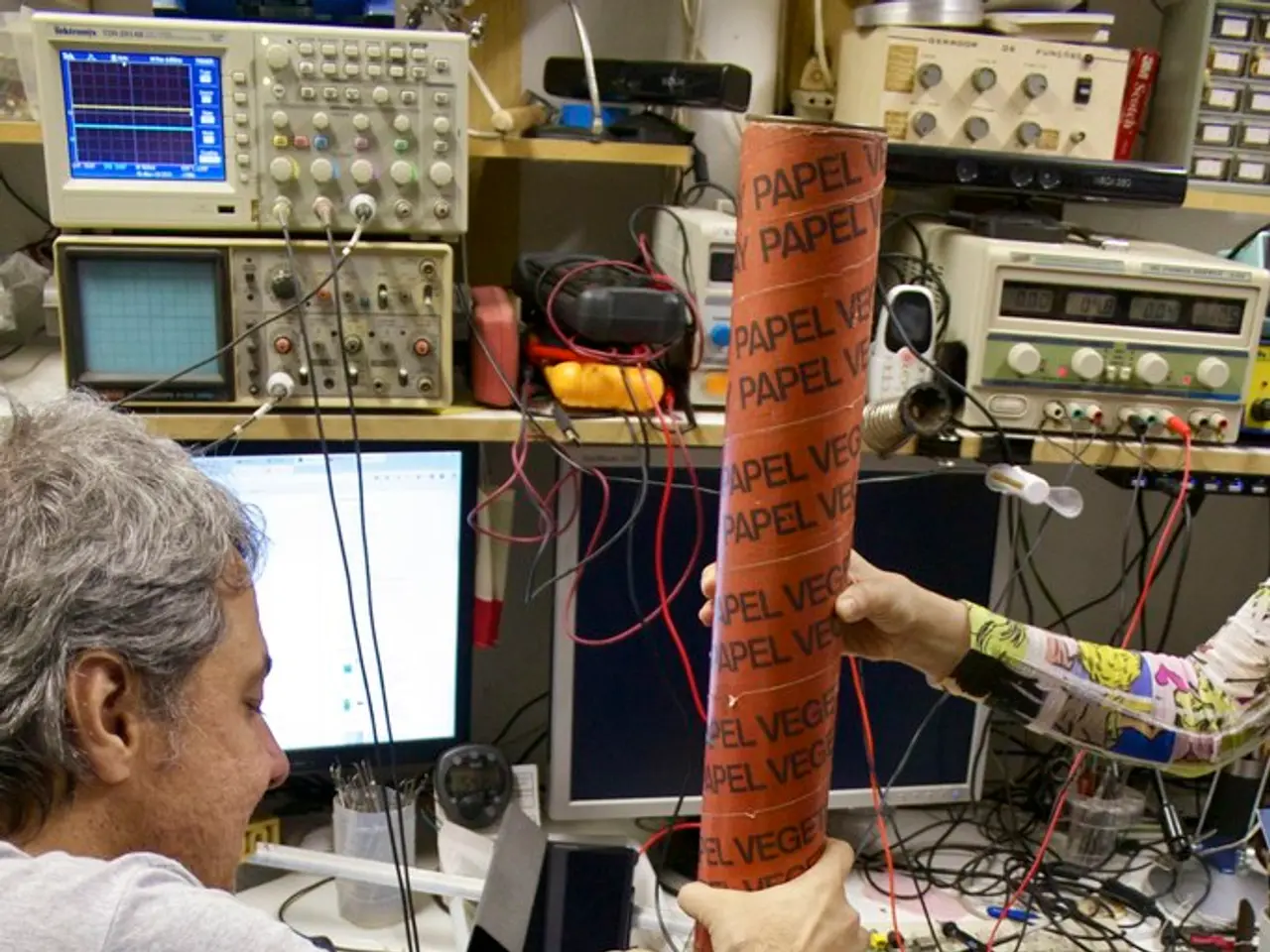Sensory Internet Revolution: Pioneering the Way Forward in Data Transmission Technology
The Tactile Internet, a groundbreaking connectivity approach, is rapidly maturing with 5G's ultra-reliable low latency communication (uRLLC) at its core. This innovative technology is set to revolutionize the way we interact with the digital world, enabling real-time remote touch interaction across critical sectors.
Key Characteristics
At the heart of the Tactile Internet is ultra-low latency. Delays under 1 millisecond are crucial to enable instantaneous tactile feedback, making it feel as if users are physically present. Ultra-high reliability, with availability above 99.999%, is also necessary to maintain continuous and precise control.
The Tactile Internet supports the real-time transmission of touch and actuation data, opening up opportunities for users to remotely feel and control tactile interfaces, robotics, or machinery. It also provides a foundation for exchanging haptic information alongside conventional multimedia content.
Application Domains
The Tactile Internet holds significant potential across various domains. In healthcare and telemedicine, it could enable precise haptic feedback during remote surgery and diagnosis. In the industrial IoT and robotics, it could support networked industrial control systems requiring real-time tactile data for precision tasks.
Autonomous vehicles and connected car systems could benefit from the Tactile Internet's safety-critical applications, providing reliable instant control and feedback. Immersive communication, such as augmented/virtual reality experiences, could be enriched with touch sensations to enhance presence.
Technical Challenges
Despite its promise, the Tactile Internet faces several technical challenges. Achieving sub-millisecond latency and near-perfect uptime simultaneously requires sophisticated network architecture and coordination. Handling network transitions without interrupting tactile feedback is a multifaceted challenge.
Security and data integrity are critical concerns, with prevention of unauthorized access, data manipulation, and model poisoning being essential to trustworthiness and safety, especially with AI-driven components. Integration complexity, combining AI, edge computing, and 5G to meet performance and security requirements, is another significant challenge.
Solutions and Future Developments
Several solutions are being explored to overcome these challenges. Network slicing and Quality of Service (QoS) prioritization ensure dedicated, low-latency communication for tactile data. Edge computing, by processing data near the user, reduces latency and supports the stringent real-time requirements of tactile interactions.
AI-enabled digital twins provide real-time simulation and threat detection to enhance system resilience and security. Collaborative industry efforts among stakeholders are also crucial, working together to solve issues like seamless connectivity and ensuring uninterrupted tactile experiences.
Ongoing research aims to further integrate AI, blockchain, and advanced cybersecurity measures to secure and optimize the Tactile Internet, especially as technologies evolve towards 6G and beyond.
In summary, the Tactile Internet is poised to transform the way we interact with the digital world, enabling real-time remote touch interaction across critical sectors. Overcoming latency, reliability, connectivity, and security challenges through advanced network technologies and coordinated industry innovation is key to its widespread adoption and future development.
Read also:
- Century Lithium Announces Production of Battery-Grade Lithium Metal Anodes from Angel Island Lithium Carbonate
- AMD's FSR 4 expands its compatibility thanks to OptiScaler's ability to convert any contemporary upscaler into FSR 4, provided that the game isn't built upon Vulkan or contains anti-cheat software, excluding such titles.
- Benefits, Nutrition, and Applications of Matcha: A Comprehensive Overview
- Interview Questions for George Garofalakis, Creator of Space Visualization








